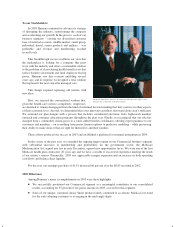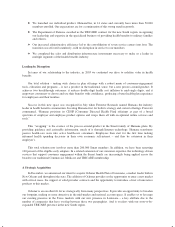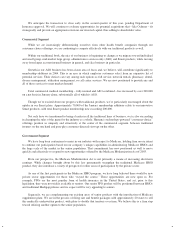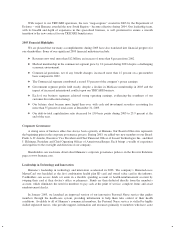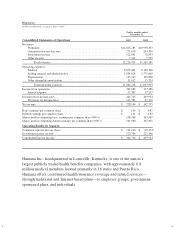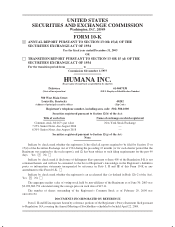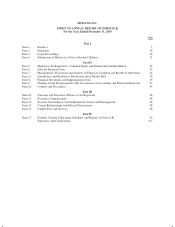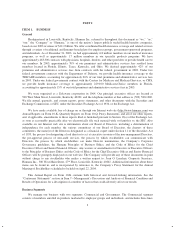Humana 2003 Annual Report Download - page 5
Download and view the complete annual report
Please find page 5 of the 2003 Humana annual report below. You can navigate through the pages in the report by either clicking on the pages listed below, or by using the keyword search tool below to find specific information within the annual report.
We anticipate the transaction to close early in the second quarter of this year, pending Department of
Insurance approval. We will continue to evaluate opportunities for potential acquisitions that – like Ochsner – fit
strategically and provide an appropriate return on our invested capital, thus adding to shareholder value.
Commercial Segment
While we are increasingly differentiating ourselves from other health benefit companies through our
consumer-choice offerings, we are continuing to compete effectively with our traditional products as well.
Within our traditional book, the mix of our business is beginning to change as we migrate toward individual
and small group, mid-market large group, administrative services only (ASO) and Smart products, while moving
away from larger account insured business in general, and slice business in particular.
Growth in our ASO business has been a keen area of focus and, we believe, will contribute significantly to
membership additions in 2004. This is an area in which employer customers select from an expansive list of
potential services. Their choices can vary among such options as full service, network rentals, pharmacy, dental,
disease management, utilization management, or call center services. We are now positioned to provide any and
all of these services to meet market demand.
Total commercial medical membership – fully insured and ASO combined – has increased by over 200,000
on a net basis in January alone, substantially all of which is ASO.
Though we’re excited about our progress with traditional products, we’re particularly encouraged about the
uptake in our Smart plans. Approximately 70,000 of the January membership additions relate to our innovative
Smart products, with total Smart product membership now exceeding 200,000.
Not only have we transitioned to being a leader in all the traditional lines of business, we’re also succeeding
in changing the rules of the game for the industry as a whole. Humana’s technology-powered “consumer-choice”
offerings position us uniquely and attractively at the center of the commercial segment, between traditional
insurers on the one hand and pure-play consumer-directed start-ups on the other.
Government Segment
We have long been contrarians to many in our industry with respect to Medicare, holding firm on our intent
to continue our participation based on our company’s unique capabilities in administering Medicare HMOs and
the huge scale of the market in the senior population. That commitment has now positioned us well to move
quickly and effectively to respond to new opportunities offered by the Medicare Modernization Act of 2003.
From our perspective, the Medicare Modernization Act is not primarily a means of increasing short-term
earnings. While changes brought about by this law permanently strengthen the traditional Medicare HMO
product, they also introduce a variety of prospects for other areas of participation by the private sector.
As one of the first participants in the Medicare HMO program, we have long believed there would be new
private sector opportunities for those who “stayed the course.” These opportunities are now upon us. For
example, PPOs are the most popular form of health insurance in the United States; and yet, prior to this
legislation, they were not widely available to seniors. Our senior PPO product will be positioned between HMOs
and traditional Medigap policies and we expect will be very appealing to seniors.
Separately, we are complementing our existing array of senior products with the introduction of Medicare
supplement plans. We are in the process of filing rate and benefit packages with approximately 20 states to sell
this medically underwritten product, with plans to double that territory over time. We believe this is a firm step
toward offering another option to the senior population.



